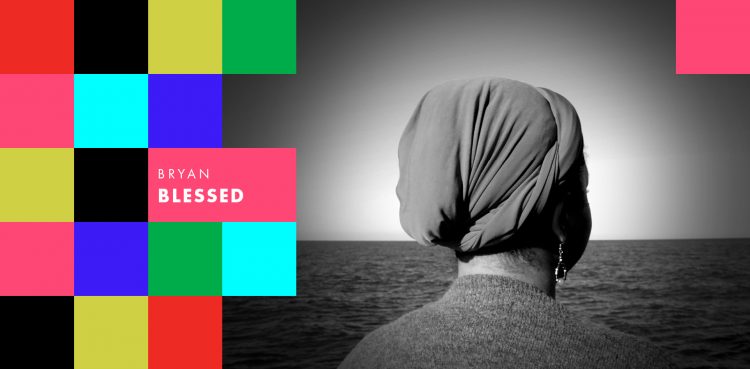By Gregory Moomjy
Opera lovers don’t need to go far to see religious themes and stories on stage. For instance, Verdi’s Aida is about the dangers of living in a theocracy, whereas his Nabucco draws parallels between Italy’s struggle for independence in the 19th century and the plight of the Jews in Babylonian captivity. Still. My favorite examples of when opera and religion collide are more along the lines of Donizetti’s Maria Stuarda or Poulenc’s Dialogues of the Carmelites. In those works, the focus is not so much in telling these vast ancient epics that involve entire empires and cultures, but rather on one’s intimate relationship with God. Since both these works focus on martyrdom, they allow the protagonist to explore what their relationship with God means.
Courtney Bryan’s Blessed which is on the Opera Philadelphia channel February 26 and available until May 31stis not about martyrdom, but it does reflect on people’s personal relationship with God. Bryan also plays accompaniment in the piece. It also features soprano Janinah Burnett, vocalist Damian Norfleet, and filmmaker Tiona Nekkia McClodden. She was inspired from Jesus’ quote from Matthew 5, “blessed are the meek, for they will inherit the earth.” The text of the work uses the Beatitudes to reflect on the social unrest of the summer of 2020. The Beatitudes are the central tenants of Christ’s Sermon on the Mount, where he lays out who will inherit The Kingdom of God. Certain visuals, one in particular of Damian in a hoodie, pay homage to the many black men who die young.
The main attribute of Blessed is Bryan’s adept use of texture. The works opening section is accompanied by prepared piano. Prepared piano is a form of modified piano. This modification can occur in many ways. For instance, here Bryan had access to the piano mallets and plucks the strings while playing. This gives the piano an added dimension. It is one of the ways Bryan uses impressionistic sonorities to create the feel of a communion with the Divine illustrating that we are all made in God’s own image. This is strengthened by Bryan’s writing for the right hand, where she adds grace notes which add to the mystical qualities of the opening.
The piece is divided into sections, which in turn each focus on a space or an individual. To that end, Blessed is truly a 20-minute gesamtkunstwerk, or a total work of art, where the music and visuals work in tandem. There are certain sequences which focus on individual singers simply standing alone be in central Park or on a pier. The singing is done as a voiceover which strengthens the idea that the piece shows individuals exploring their own personhood.
From the very beginning of the video, there’s a plethora of black iconography, both religious and secular, including a black mother holding her child as well as St. Martin de Porres. Later in the final scene shot in St Luke’s Episcopal Church in New Orleans, the camera focuses on stained glass windows which immortalize prominent figures in the black church such as Martin Luther King Jr. and Frances Joseph-Gaudet, who was an advocate for criminal justice reform in Louisiana and was later canonized in 2007 as an official Episcopal saint. The piece starts in a home and ends in a church, with a stopover at Central Park and the ocean, therefore it explores both private and communal spaces of worship.
Musically, the piece is notable for its use of spoken text. In opera, typically, everything is sung, therefore the absence of singing makes things stand out and a good composer knows how and when to make the contrast. Here, Bryan uses spoken text to draw attention to discrepancies between Jesus’ teachings in the Beatitudes and how they are put into practice in modern times. Such as when in response to the Beatitude “Blessed are those who are persecuted for righteousness’ sake, for theirs is the kingdom of heaven” the singer asks, “who is blessed?” and “who is righteous?” Bryan’s musical language is steeped in jazz and the chordal progressions and melodic contours of spirituals.
In general, a sense of hymnity pervades the work as in the duet between Janinah Burnett and Damian Norfleet where she lends her sweet translucent soprano to a piece that recalls Mozart’s C Minor Mass. At certain points, particularly on the sequence focusing on Norfleet, Bryan makes use of appoggio and scale to bring a sense of majesty to the phrase ‘Blessed are the righteous.’
The past year has been a time of great change. An important offshoot of the social justice movements is the drive to ensure that everyone can see themselves represented in the arts. Blessed accomplishes this in a crucial way, by connecting the black experience to the Beatitudes where Jesus literally laid out who would inherent the kingdom of God.
*
In the Revised Standard Version, the nine Beatitudes of Matthew 5:3–12 read as follows:
Blessed are the poor in spirit, for theirs is the kingdom of heaven.
Blessed are those who mourn, for they shall be comforted.
Blessed are the meek, for they shall inherit the earth.
Blessed are those who hunger and thirst for righteousness, for they shall be satisfied.
Blessed are the merciful, for they shall obtain mercy.
Blessed are the pure in heart, for they shall see God.
Blessed are the peacemakers, for they shall be called sons of God.
Blessed are those who are persecuted for righteousness’ sake, for theirs is the kingdom of heaven.
Blessed are you when men revile you and persecute you and utter all kinds of evil against you falsely on my account. Rejoice and be glad, for your reward is great in heaven, for so men persecuted the prophets who were before you.

